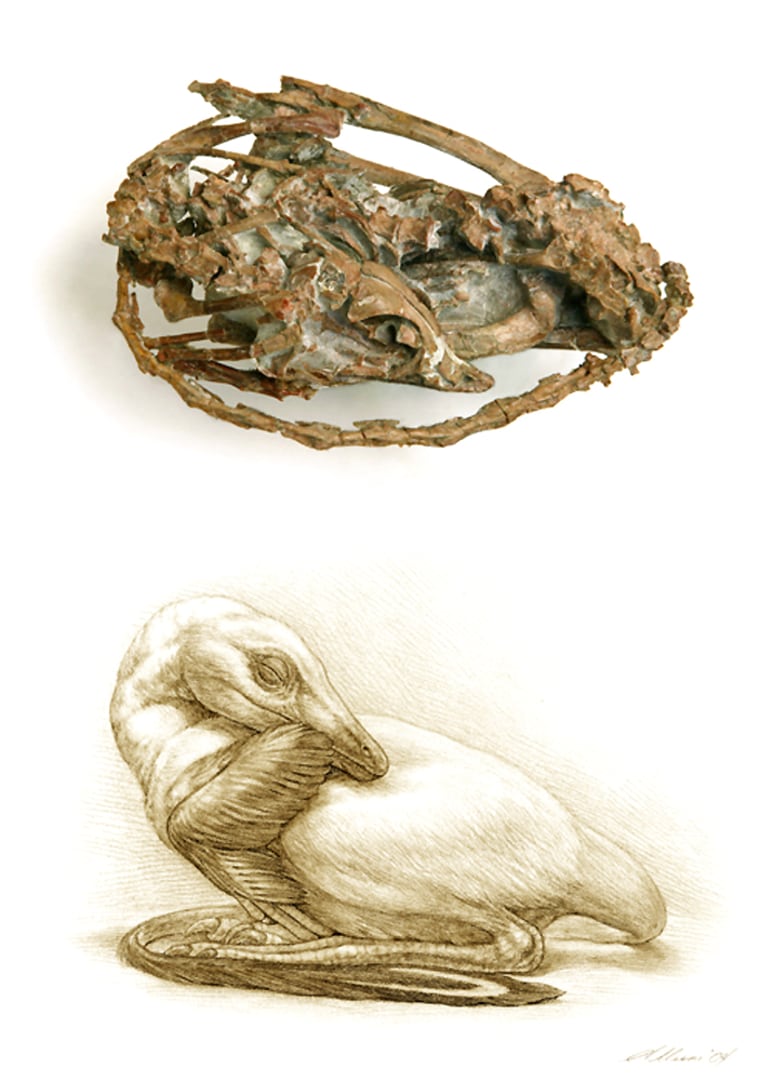Scientists have unearthed the remains of a previously unknown, perfectly preserved 130 million-year-old species of dinosaur that provide a first-ever look at how the prehistoric creatures slept.
The small, two-legged dinosaur was discovered in China, curled up with its head tucked under the forearm — a pose similar to how modern birds sleep.
“This is the first report of sleeping behavior in dinosaurs,” Xing Xu of the Chinese Academy of Science in Beijing, told Reuters on Wednesday. “We’ve never had any other information about a dinosaur sleeping.”
Dubbed Mei long, which means “soundly sleeping dragon” in Chinese, the dinosaur was about 21 inches (53 centimeters) long or about the size of a large bird. Several features indicate its avian origins.
“It is one of the most complete skeletons I have ever seen. It is a perfect preservation. We have almost every bone in the skeleton,” Xu explained. “There is no disturbance. The body is arranged in a lifelike posture.”
The sleeping skeleton was found near Beipiao City in Liaoning province, an area rich in fossils that have revealed secrets of dinosaur behavior.
The sleeping posture indicates that the characteristic probably originated in dinosaur ancestors of modern birds, according to the scientists. Judging from its remarkably preserved state and position of the skeleton, Mei long died a peaceful, and probably sudden, death.
Unlike other dinosaurs found with their neck extended back in a classic death pose, Mei long seemed to be sleeping contentedly when it died.
Xu and his colleague Mark Norell, of the American Museum of Natural History in New York, are not sure what killed the dinosaur, but they said there are several possibilities. It could have been starved of oxygen, buried under thick layers of volcanic ash or could have been sleeping in a cave or burrow when the roof collapsed.
“What you can see from the skeleton is that it died peacefully, quickly,” according to Xu, who reported his research in Thursday's issue of the journal Nature.
